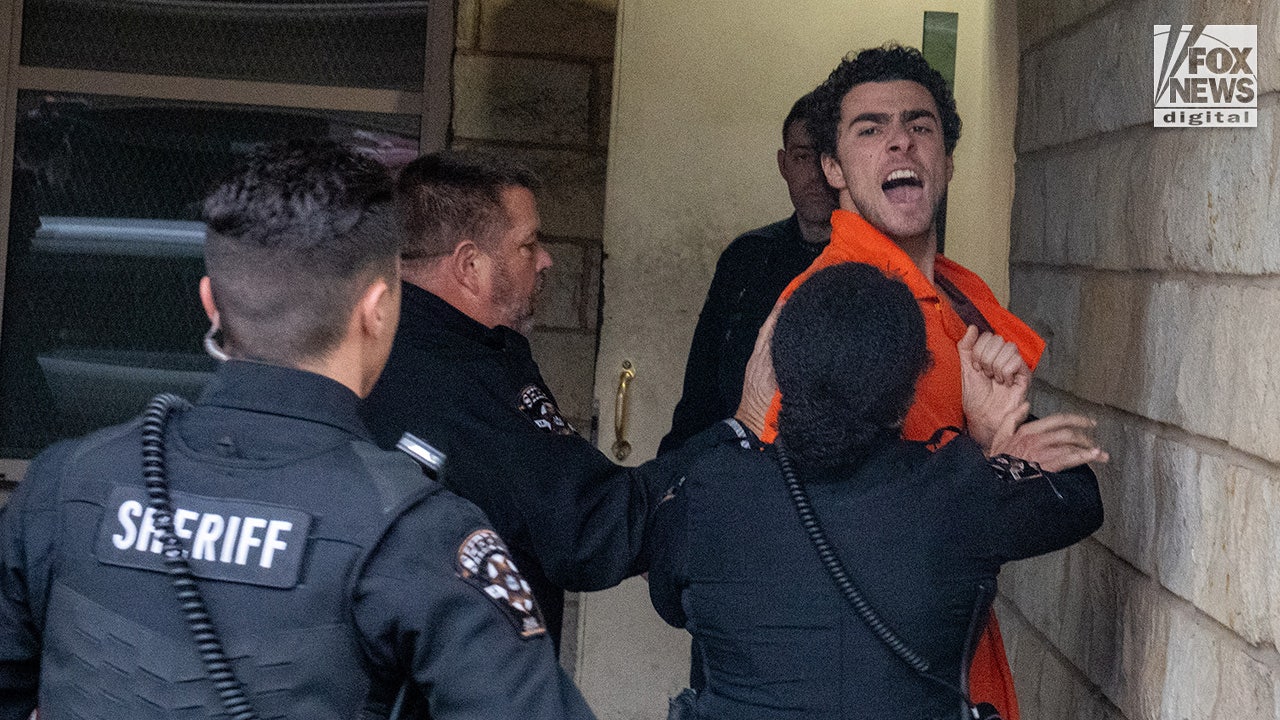Stormy Daniels was on the witness stand, Donald Trump was at the defense table and I could feel a queasy energy flow through the Manhattan courtroom. Daniels, an adult film star, told jurors about having sex with Trump in 2006. The former president radiated disgust, shaking his head and muttering obscenities.
I’ve been in the courtroom every day, and in today’s newsletter I want to share a bit about what it’s like to watch this spectacle unfold in person. This is the third of Trump’s trials that I’ve covered, but there’s still something striking about seeing a ubiquitous media figure in the flesh. He strides into the courtroom just before proceedings begin each morning: a real, heavily made-up person who directs grimaces, glowers and occasionally winks toward the reporters. His face falls when he thinks he is not being observed. And sometimes, when he stands up from the defense table, I can see him ready himself to face the press — jutting out his jaw before turning toward our seats.
Trump is not on trial for sleeping with Daniels, which he denies, or for paying her to keep silent. He is charged with something significantly less provocative: 34 counts of falsifying business records. Pundits have lamented the quotidian nature of the case — the only jury trial he may face before the election — given the monumental misdeeds of which he is accused elsewhere, including efforts to overturn election results. But the Manhattan district attorney says that his case, too, is about manipulating an election — the 2016 race. Prosecutors here are trying to convince jurors that Trump did something illegal by authorizing the hush-money payment and then seeking to conceal it once he was elected.
Even though it’s a documents case, the trial has thrummed with high-octane moments like his face-off with Daniels. Each time the prosecution calls a witness, rows of onlookers watch a figure from Trump’s past swear an oath that could threaten his future.
The big show
Prosecutors have called 19 witnesses to bring their story to life. They say that after Trump’s lawyer, Michael Cohen, paid Daniels to be quiet, the president and his associates concocted 34 business documents, supposedly for legal services, that actually repaid Cohen for the hush money.
Each witness performed differently on the stand.
It’s jarring for these creatures of the attention-seeking worlds of reality television, supermarket tabloids and politics to be ensconced in a small courtroom where only a few dozen people can hear their testimony against the former president. The trial isn’t broadcast. So instead of creating a show for the cameras, their stories are enlivened by lawyers’ questioning, documentary evidence and reporters who feed their editors and producers from their laptops inside the room.
Initially, Trump pushed back on the proceedings, insulting Daniels and Cohen and suggesting the jurors were a bunch of biased Democrats. But the judge has forbidden Trump from talking about witnesses or jurors, fined him $10,000 for violating the order and threatened to send him to jail. Since then, in the courtroom, Trump has seemed diminished. Silence does not suit him. Seated at the defense table for hours on end, he has often shut his eyes, blocking out the courtroom where 12 New Yorkers will soon determine his future.
More from court yesterday:
THE LATEST NEWS
Supreme Court
Scam or not: Do pimple patches work?
The Pour: Ukrainian wines are finding a global audience.
Lives Lived: Nancy Neveloff Dubler pioneered bedside methods for helping patients, their families and doctors deal with agonizing life-and-death decisions, and she used that knowledge in her own final months. She died at 82.
SPORTS
Wild: Surprisingly often, animals gatecrash sporting events.
N.B.A.: The Dallas Mavericks beat the Oklahoma City Thunder, giving the team a 3-2 series advantage. The Boston Celtics cruised to a series win over the Cleveland Cavaliers.
N.F.L.: The league released its full schedule, which includes a surprise deal with Netflix to air games on Christmas Day.
Music baffles evolutionary scientists. They ask: Did our ancestors sing to attract mates? Or is music a product of culture? There isn’t an answer yet. But in a new study, researchers found universal features of songs across many cultures, suggesting that music evolved in our distant ancestors.
“It shows us that there may be really something that is universal to all humans that cannot simply be explained by culture,” said Daniela Sammler, a neuroscientist. Read more about where music may come from.






